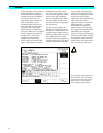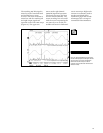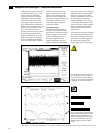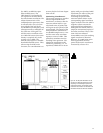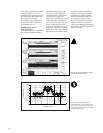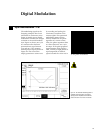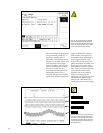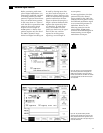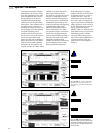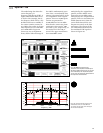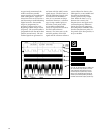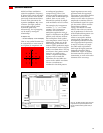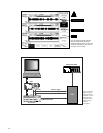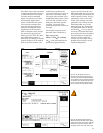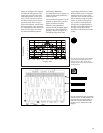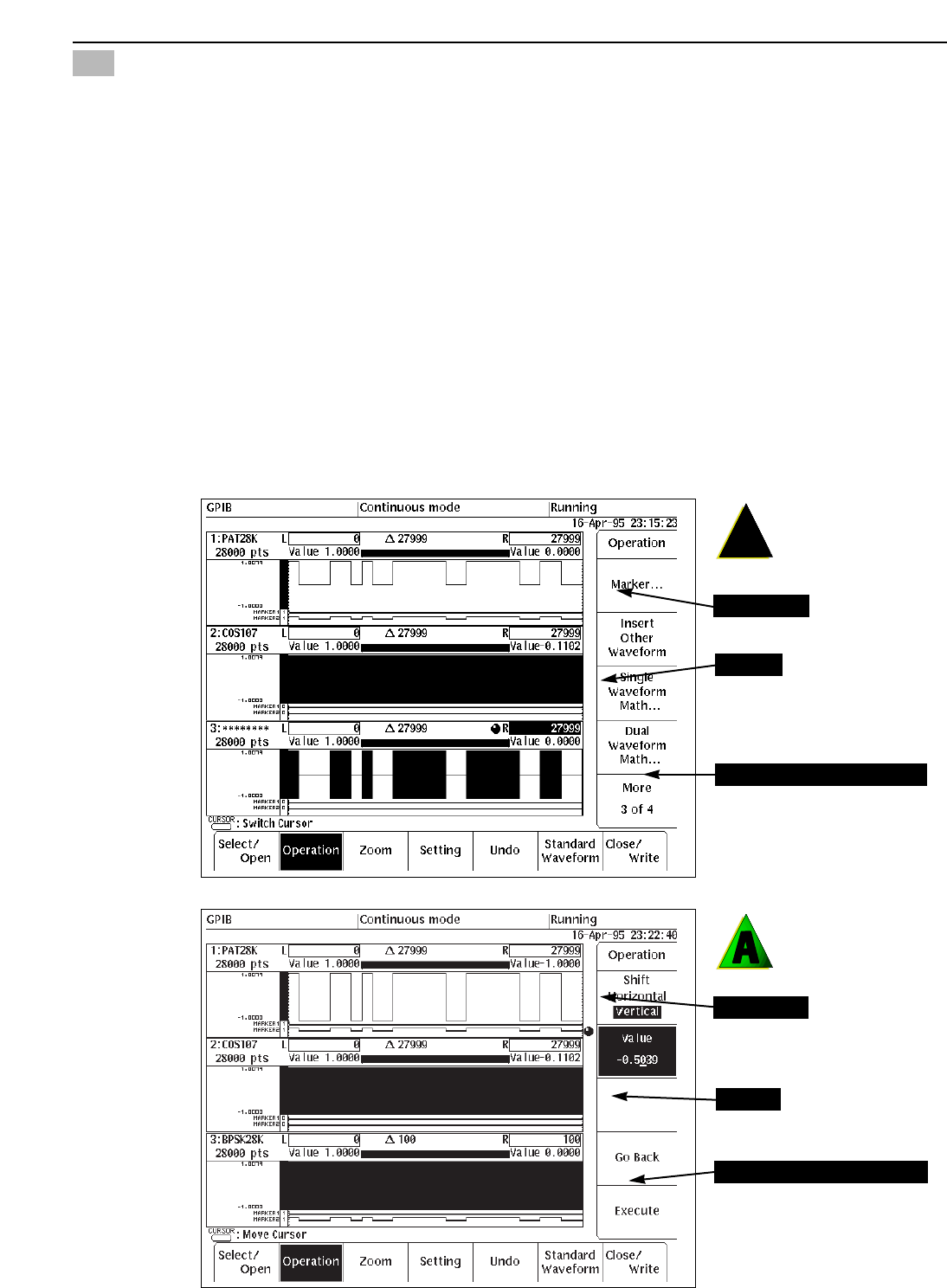
22
The simplest example of digital
modulation is to turn the carrier
on or off, depending on the state
of the modulation data. On-off
keying (OOK) can be directly
implemented by multiplying a
carrier by the 1 or 0 value of the
data pattern. This example uses a
10.7 MHz carrier created in a
28,000 point record to match the
record length of the data pattern.
The AWG sampling rate is
40 MHz so the record period is
700 µs. Since each of the 28 data
values occupies 1000 record
points, the data rate is 40 kbaud.
Figure 26 shows how the AWG’s
dual waveform math capability
multiplies the data pattern (top
display) and the 10.7 MHz carrier
(middle) to produce the modu-
lated carrier (bottom). Since
10.7 MHz is a popular receiver IF
frequency, these signals can be
directly injected at the appropri-
ate receiver point to characterize
demodulator performance. The
AWG’s sequencing and triggering
capabilities are particularly
useful in OOK remote-control
device simulations. The AWG
can generate single or occasional
bursts with varying parameters
such as carrier frequency offset or
data rate. The burst itself can be
amplitude modulated with
another waveform to simulate the
power ramping found in many
battery-powered transmitters.
If the data pattern is simply
shifted vertically so that it takes
on bipolar values of –1 and +1,
instead of 0 and 1, then the
modulation inverts the sign of
the carrier. Since inverting the
sign is equivalent to shifting the
phase argument of the carrier by
π, this implements two-state or
binary phase-shift keying
(BPSK). Figure 27 illustrates the
same AWG setup except that the
modulating pattern is offset
using the shift and scale func-
tions. The resulting BPSK has a
constant envelope since the
magnitude of the multiplier is
always 1.
Figure 26. OOK: The “1” and “0” values of the
data pattern turn the carrier on and off. The
carrier frequency is 10.7 MHz. The data rate is
40 kbaud.
Figure 27. BPSK: The 28-bit data pattern is
shifted and scaled to generate a bipolar pattern.
This implements BPSK modulation when multi-
plied by the carrier. The BPSK waveform has a
constant envelope.
Digital AM — OOK and BPSK
10
Data pattern
Carrier
Modulated carrier (output signal)
Data pattern
Carrier
Modulated carrier (output signal)



